The Truth About Chocolate and Cancer
When my oncologist gave me a list of foods that were good to eat, my eyes immediately saw the words “Dark Chocolate”. I smiled for the first time in months. That gave me a tiny spark of happiness in an otherwise stressful and scary time during my cancer diagnosis.
This post contains affiliate links. As an Amazon Associate, I earn from qualifying purchases.
I am not a huge fan of this bitter tasting treat. I much prefer milk chocolate. But as I researched my doctor’s suggestion, I quickly found out that milk and dark chocolate are two completely different things.
In fact, not even all dark chocolate is created equal.
So, let me tell you what I found out about chocolate and cancer.
Chocolate is a Fruit
Chocolate comes from the Theobroma cacao tree. This tree grows in hot, humid areas such as Mexico, South America, and parts of Africa and Southeast Asia. It produces fruit in the form of cacao pods containing the seeds, called cacao beans, that make chocolate.
So, technically chocolate comes from the seed of a fruit.
The world loves chocolate, consuming up to 3 million tons of cacao beans per year. That is a whole lot of beans. But the beans need to be fermented, dried, roasted, milled, and processed before they are ready to become chocolate.
Knowing how chocolate is made is important to understand which chocolate is healthy and which is not. Not all chocolate is the same.

Chocolate Liquor
Chocolate liquor, not to be confused with chocolate liqueur, does not contain any alcohol. It is the product produced after the cocoa seeds have been ground down. Chocolate liquor can then be used to make chocolate, or further processed to produce cocoa butter and cocoa powder.
Chocolate liquor is 100% cocoa.
This thick and rich liquid can then be pressurized to separate out the two main components of chocolate. These are the fat, known as cocoa butter, and the solid, called the cocoa presscake.
Cocoa Butter
Cocoa butter is the fat that is pressed out of chocolate liquor. Because it melts at human body temperature, it gives chocolate that “melt in your mouth” quality. But, it is not just used in making chocolate.
The beauty industry has used this fat, claiming that it nourishes the skin, increasing blood flow. Some claim that it has anti-aging properties and protects skin from the sun’s UV rays. But some of these claims are not backed by science.
Cocoa butter is not necessarily a healthy fat. It contains palmitic acid and stearic acid which are saturated fats, which are bad for you. However, it also contains oleic acid, a monounsaturated fat, that can decrease risk of heart disease. So, there is some balance there.
Cocoa Solids
The cocoa presscake is further processed and pulverized to form cocoa powder.
Cocoa solids contain the phytochemicals and flavonoids that give chocolate its many health benefits.
There are two main types of cocoa powder: natural and Dutch chocolate. The natural form of cocoa powder is the healthiest. The further processing to neutralize the acids in cocoa to make Dutch powder destroys many of the beneficial flavonoids and antioxidants.
Raw Chocolate
Raw Chocolate is often claimed to be the healthiest form of chocolate. The beans in raw chocolate are not roasted before the nibs are separated out. Some chocolate makers claim that this preserves the minerals and antioxidants in their beans.
Further processing of the nibs into chocolate liquor is done via gentler processes than standard chocolate.
But raw chocolate is also not sterilized since it only goes through low-heat or ‘cold’ processing. Microbial contaminants can and do occur during the fermentation process. This may be a concern for some cancer patients with compromised immune systems.
Raw chocolate tastes different too, as a lot of flavor comes from roasting the beans. It is definitely an acquired taste. Raw chocolate is much more bitter than dark chocolate.
Other Components Often Added to Chocolate
- Milk
- Sugar
- Flavorings
- Fats, such as vegetable oil or milk fat
- Sugars, such as corn syrup
- Other agents, such as baking soda or butyric acid
Different Types of Chocolate

It is not my intention to cover all the different types of chocolate in this article. I will just talk about the most common ones. If you are a chocolate connoisseur, you may find this next section rather basic. But knowing the basis behind different types of chocolate is important if you want the full health benefits that chocolate has to offer.
Let’s look at the three main types of chocolate
1. White Chocolate
White chocolate contains no cocoa solids. I am not even sure why it can be called chocolate. I think chocolate-like candy would be more appropriate. But that, of course, is not up to me.
White chocolate consists primarily of sugar, milk, and cocoa butter. By definition, white chocolate must contain 20% cocoa butter, 14% milk and no more than 55% sugar.
Yes, that is correct; half of white chocolate is sugar.
I will just state it outright: white chocolate is not healthy.
2. Milk Chocolate
This is the most popular type of chocolate in the world.
Milk chocolate contains about 10 – 35% cocoa solids, depending on which country you buy it in. In the US, it must contain at least 10 % chocolate liquor. In Canada and Europe, it must contain at least 25% cocoa solids to be called chocolate.
The cocoa portion is diluted with milk and a lot of sugar.
Milk chocolate is not a healthy option either.
Let’s leave milk chocolate in that occasional sweet treat category.
3. Dark Chocolate
Okay, here is where it gets interesting.
Dark chocolate can be a healthy option in your diet.
This is the type of chocolate that my oncologist had on the ‘good foods’ list.
But, WAIT! Not all dark chocolate is the same.
You need to keep reading. This is the important part.
There are three basic types of dark chocolate; Semi-Sweet, Bittersweet and Unsweetened. Let’s look at each of these separately.
Semi-Sweet
Semi-sweet is the more popular form of dark chocolate. It most commonly contains around 40 – 60% cocoa solids, although sometimes more. As the name suggests, more sugar is added to sweeten this type of dark chocolate.
Because of the lower amounts of cocoa solids and the higher sugar content, semi-sweet chocolate should be in the occasional sweet treat category. Although it is healthier than milk chocolate.
Bittersweet & Unsweetened
Bitter and unsweetened chocolate contain the least amount of sugar.
Bittersweet chocolate generally contains 65 – 80% cocoa solid. However, since this is not regulated, it may contain more or less.
Unsweetened chocolate contains 85-100% cocoa and is considered one of the purest forms of chocolate. It does have a very strong bitter taste that some find hard to eat.
It can be a good chocolate to add to baking giving foods an intense chocolate flavor. However, not all recipes calling for semi-sweet chocolate can be substituted with unsweetened chocolate.
Healthy dark chocolate is in this category. Chocolate should have at least 70% cocoa solids to be considered a healthy option.
All this said, manufacturers can label their dark chocolate any way they choose. The only requirement is that it contain at least 35% cocoa solids and less than 12% milk to be called dark chocolate. So, just because it says “dark chocolate” doesn’t mean that it is a healthy dark chocolate.
It is important to read the label on the chocolate you are eating.
Look for dark chocolate that says that it contains at least 70% cocoa.
Related Articles
Do’s & Don’ts of Eating During Cancer Radiation Therapy
10 Foods that Boost Your Immune System
Fight Cancer with Delicious Cruciferous Vegetables
Do’s & Don’ts of Eating While Taking Tamoxifen
Dangers Lurking in Chocolate
Sugar
As discussed, different types of chocolate contain differing amounts of sugar. White, milk and semi-sweet chocolate contain higher amounts of sugar compared to bittersweet and unsweetened.
The World Health Organization suggests that people limit their sugar consumption to just 25 grams of sugar per day.
White chocolate contains about 59 grams of sugar per 100 grams of chocolate. Milk chocolate contains 52 grams of sugar per 100 grams. The average chocolate bar is about 45 – 50 grams. So, you are eating your daily sugar limit in just one bar.
Fat
Too much dietary fat can lead to weight gain. The wrong types of fat can lead to heart disease and other health problems. Some manufacturers will add fats, such as palm oil, to their chocolates. And chocolate also naturally contains cocoa fat, which is not necessarily healthy.
So, even with dark chocolate, which may contain about 40 grams of fat per 100 grams of chocolate, the amount you eat in a day should be limited.
Theobromine
Theobromine has a similar effect in your body as caffeine. Because it is mainly contained in the cocoa solids, dark chocolate has a higher concentration of this compound.
There is good and bad news about theobromine. The amount in chocolate is tolerable to humans, but it is poisonous to dogs and cats, who are more sensitive to the caffeine-like effects.
The good effects are that it gives you energy, lowers blood pressure, opens your airways, lightens your mood and reduces inflammation.
The bad effects occur if you eat too much. Large amounts of theobromine can cause your heart to race, make you feel nauseated and bring on a headache.
Microbial Contaminants
As I mentioned earlier, fermentation of the cocoa beans may lead to contamination with bacteria. This is only a potential problem with raw chocolate. This is not common. But it may be a concern for people who don’t have strong immune systems.
Dark Chocolate and Cancer
The American Cancer Society states that “small amounts of high-quality dark chocolate of at least 70% cocoa” might give you some benefits.
70% Cocoa or Higher
The preliminary research suggests that 70% or higher cocoa is helpful for cancer patients.
Studies in animals have shown diets containing cocoa can help reduce the risk of breast, prostate, pancreatic, liver, blood and colon cancers.
The fighting power of cocoa comes from phytochemicals and flavonoids. Flavonoids in cacao have the ability to scavenge harmful molecules and protect healthy cells from damage.
While other foods, such as berries, fruits, teas and beans, also contain these flavonoids, cacao contains higher concentrations of these beneficial molecules.
Dark Chocolate’s Anti-Cancer Properties
Specifically, these flavonoids and phytochemicals have cancer-fighting properties. These compounds act to reduce inflammation associated with cancer and cancer treatments. They help clean up toxic compounds called free-radicals and protect your healthy cells and tissues. And some of these beneficial cocoa molecules act directly on the cancer cells themselves, stopping them from dividing.

Other Health Benefits of Dark Chocolate
There are many other benefits of eating dark chocolate. Some of these can help improve the quality of life in cancer patients and survivors.
For example, many cancer survivors have problems with memory and thinking clearly. Cocoa compounds in chocolate have been shown to protect the brain and nervous system. One of the ways it does this is by increasing the blood flow to the brain.
Here is a list of some other health benefits of cocoa and dark chocolate.
- Lowers blood pressure and protects against heart disease
- Protects the brain against aging
- Improves mood and calms anxiety
- Acts as a pre-biotic and improves gut health
- Helps control blood sugar and protects against diabetes
- Lowers allergy compounds in the body
- Acts as an appetite suppressant and helps satisfy cravings
- Boosts metabolism and helps with weight loss
- Improves muscle recovery after exercise
Still Just A Sweet Treat
While dark chocolate may be beneficial to eat, don’t go overboard.
I want to point out a couple of things. After all, I promised you the truth about chocolate.
Remember there are also bad things in chocolate. And too much of a good thing, is not good. So, incorporate only small amounts of dark chocolate into your diet. Chocolate still has sugar and fat. You need to keep that in mind and stick to your daily recommended amounts.
Cocoa has some minerals, such as magnesium, zinc, iron, copper and potassium. It also has some vitamins, mainly B and E. But it is not as powerful in nutrients as vegetables and fruits are.
You need to eat a balanced diet.
Chocolate alone isn’t enough to save you from an unhealthy lifestyle.
The science behind cocoa, dark chocolate and cancer is not conclusive. There are studies that show the benefits, but most of these are in a petri-dish or in animals. There are few good studies in cancer patients.
Regardless, do enjoy a guilt free square or two of at least 70% dark chocolate. Or put that scoop of natural cocoa powder into your smoothie. You deserve it. It may just make you happy, like it made me.
You can find other articles like this in the Pink Ribbon Runner Healthy Eating Archives
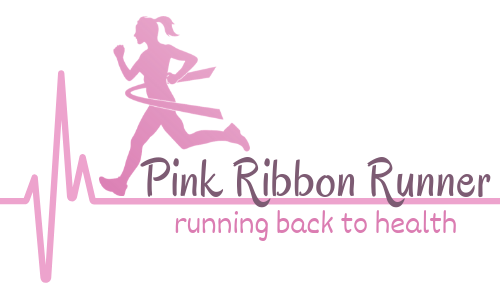
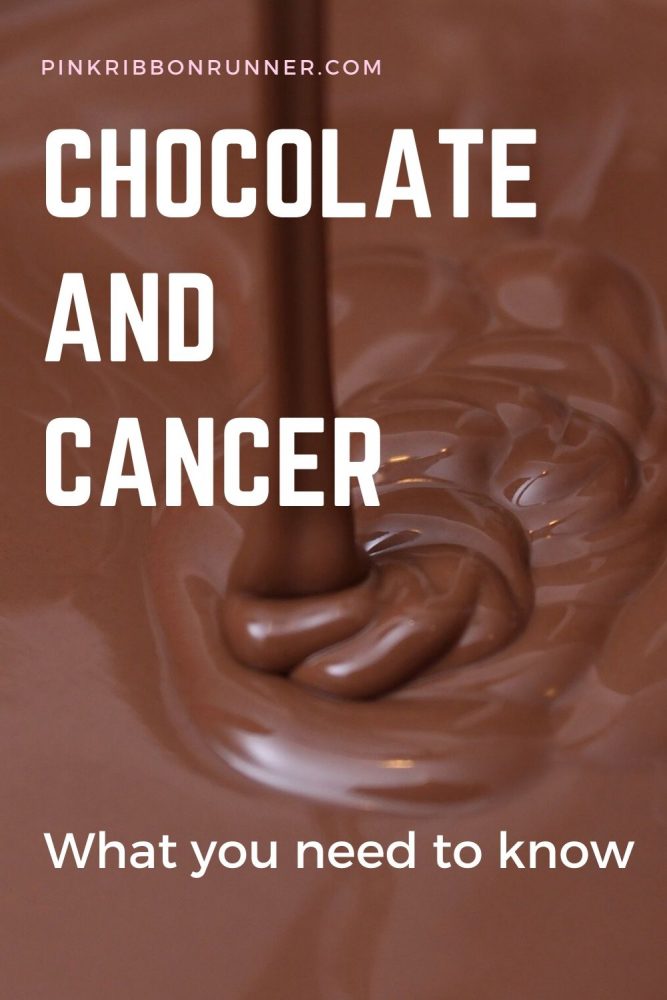




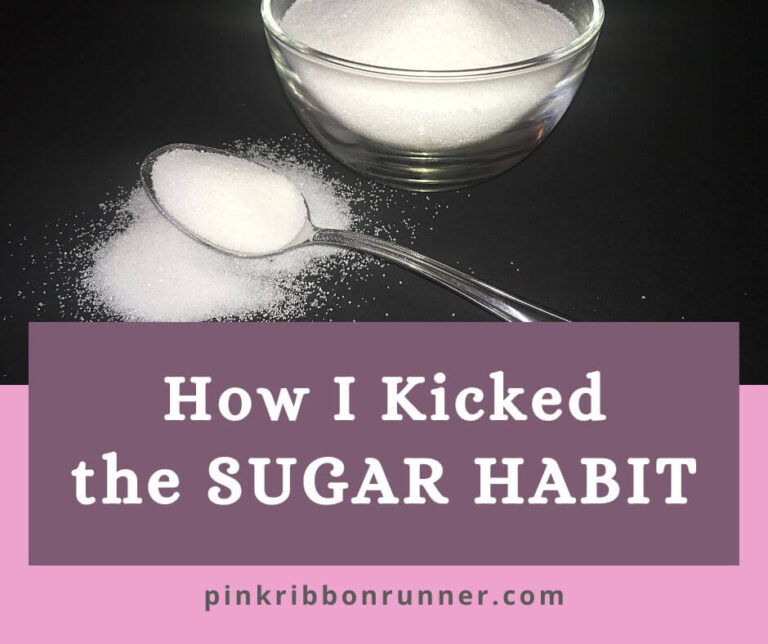
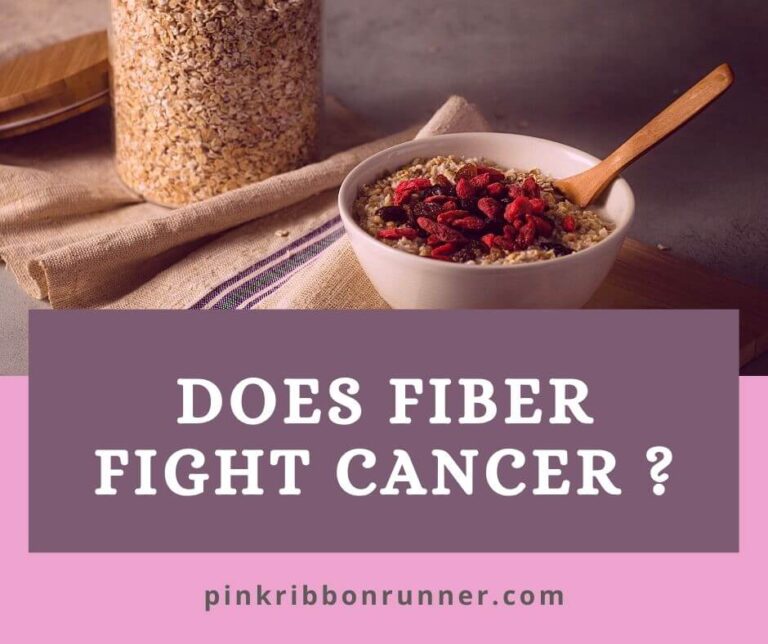

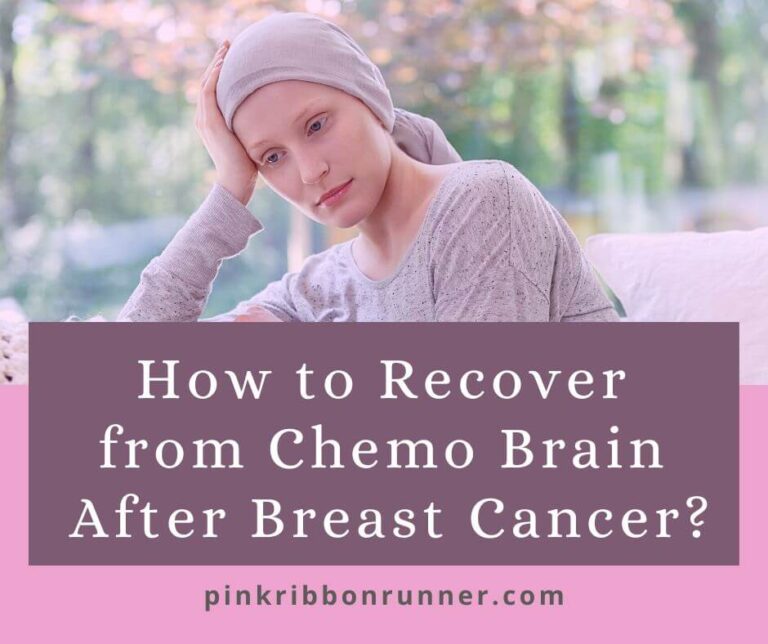
Great article. Thank you.
So glad you found it interesting and helpful.
Thank you!
Hello. I have read that cocoa can lead to breast cancer. Can you help me reconcile this info?
I have not read this. Could you email me your reference, please? I have read numerous studies from reputable sources that suggest cocoa is good for cancer. Cocoa contains flavonoid compounds that have antioxidant and anti-cancer properties, as discussed in this article. If you are referring to the drink, cocoa, as in hot chocolate, then perhaps we are not talking about the same thing? There are some concerns that both milk and sugar may influence cancers, but the research is not clear. I have written about both of these components in the Pink Ribbon Runner blogs.
I have breast cancer and every morning for breakfast I prepare Açaí berry puree 100g (no added sugar) and add some fruits: banana, blueberry, strawberry, raspberry – I also add a little bit of coconut water and 2 little “squares” of 100% dark chocolate. with a mixer it turns into a smoothie and it is the only thing my body accepts on the days after chemotherapy sessions as I do not have appetite for anything else and the nause is horrible. I am surviving chemo with this smoothie every morning.
That sounds absolutely delicious and so healthy. I am sorry you are having trouble eating during chemo. But you have found a super charged solution.
Thanks for sharing this information about chocolate. My husband has liver/bile duct cancer and I am trying to feed him healthy and helpful foods…….and to be able to add some things for his sweet tooth.
Your husband is lucky to have you in his life. Healthy foods can definitely help. I wish him all the best during his treatments.
Interesting article
Wow wow wow,
So much helpful information!
I didn’t know a lot of the things you’ve mentioned, Thank you!
This was such an enlightening article about ‘healthy’ dark chocolate and I love all the nuggets of information regarding all the differences and the benefits, especially for those who are challenged with cancer. Thanks for sharing.
I definitely have a sweet tooth and I love chocolates! Though I know that I have to eat moderately and consume dark chocolate over the other types as it is healthier. Thank you so much for this insightful article!
I’ve learned so much from this article. And I will be limiting milk chocolate and replacing with dark from now on. I never realized the potential dark chocolate had with cancer. I would love to read more about that. Very intriguing
I LOVE dark chocolate (70% and up). This is great information, thanks for sharing!
What a fantastic article. You have done such extensive research and have really broken it down for an everyday person to understand. I am very much a milk chocolate fan but after reading your post, I’ll make sure I get the right dark chocolate to manage my chocolate cravings. Looking forwards to reading your next inspiring article!
I love chocolate! Reading this article definitely gave me a better insight. Thanks!